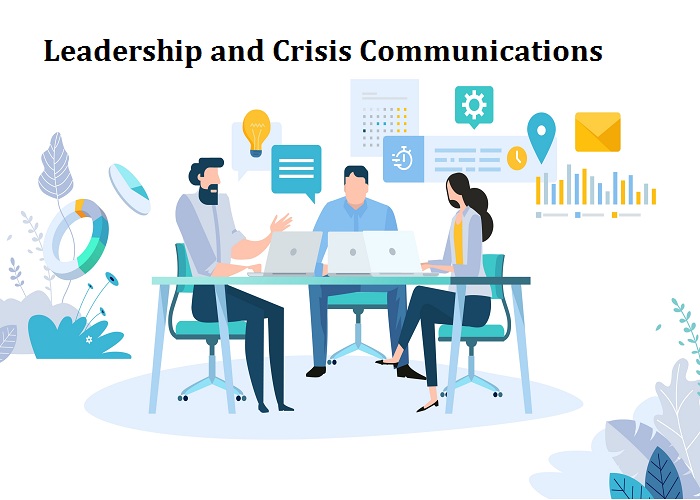




Talking about the crisis communications, this is what every person who calls himself a business leader must learn from the scandals and crisis happening across the globe. In this writeup, we will scrutinize leadership or management, communications and the media and how they all contributed to the final, disastrous outcome. By reading this article you will learn modern, effective crisis communications strategies for immediate adaptation to your company that will produce superior results in time of crisis or during emergency circumstances.
Crisis Communications
The greatest failing throughout the sequence of the events is a failing of leadership. Leadership that failed to take good advice or that which sought counsel from likeminded executives who completely mis-read the situation and the potential impact upon the organization. Initial comments that praised senior executives, failed to acknowledged the presence of mounting concern and the hubris displayed by not engaging key stakeholders, all compounded the initial misdeeds.
The single-minded approach, reminiscent of the style used by executives during the present-day Corona Crisis, Toyota vehicle recall and BP oil spill incidents, undermined any and all attempts to engage with authorities and affected communities.
Effective leadership in times of crisis is not cantered on making flawless decisions in every instance but the exploration and trial of alternatives that produce superior results and support the strategic intent of mitigating or containing the issue in order to prevent further damage, loss or suffering. This was not present at any stage and any retro-active attempts have been met with deserved scepticism and dismissed as insincere.
The timeliness and effectiveness of leadership remains highly dependent upon the selective identification and utilization of relevant communications channels to convey the intent, actions and sentiment of the company’s leadership.
Crisis Communications
Traditional and conventional media has been significantly diluted in terms of power and connectivity in recent years. Dominance in this area accounts for little in times of crisis.
Any concerns related to monopoly or control over such channels have proven to be unfounded given that the individual who supposedly controls the most significant allocation of this sector, failed completely to utilize their various media channels to any real benefit. Furthermore, ownership and control over distribution and possibly even content is useless if you don’t control or dominate all channels and opinion. It is ironic that the tool most feared by senior executives, the media, failed to support one of its own kings in time of crisis.
Crisis communications is about frequency, consistency and exposure. Communicating frequently about the issues, your intent and what your actions are to be will aide in the dilution of rumours, speculation and any falsehoods usually derived in the absence of facts. Consistency or honest acknowledgement of the circumstances stabilizes audience opinion and allows for effective monitoring of introduced variances to improve perception and penetration. Failure to do so invites any and all opinions to get airtime and gain in momentum in the absence of a consistent and transparent message. Getting to the widest possible audience, in particular your stakeholders, critics and supports through a structured exposure strategy is paramount in order to complete the plan.
Single channel broadcasting via traditional media doesn’t work as effectively in modern crisis situations. Narrowcasting to select audiences, influencers and stakeholders is the new order of the day. Being found where your audience hangs out is mandatory now on a routine and emergency basis. You cannot buy favour on these platforms or social media channels as you must earn trust and build relationships in order to be remotely believable.
Media and Crisis Communications
Traditional media expertise and traditional media experts are an endangered species. Any advice taken from such narrow expertise in today’s multi-channel media world is dangerous at best. The proof is in the fact that media owners, their advisors, editors, reporters and entire media ecosystems have been destroyed as a result of this event because they all share the same outdated group think. Even the authorities, government sector and private companies that sought such counsel and activated their strategies have been significantly and negatively affected.
Much like any profession, whether it be medicine, management or engineering, developments and evolution change the best practices and treatment of problems within your area of influence or expertise. You therefore have to evolve in order to keep relevant, effective and useful by way of education, experimentation and evidence-based decision making.
The modern-day measurement, and transparent reality for marketing effectiveness is based on Google, Bing and Yahoo search results. If you don’t make or dominate the first page of internet searches on your crisis or area of emergency, you have fallen well short of ensuring your message is clear, consistent and available to all who matter.
Conclusion: Crisis Communications
Now that you understand the best options for a modern and effective crisis communications strategy you will probably consider your own plans and approach in a much different light. In this article we examined leadership, communications and the media and how they all contributed to the final, disastrous outcome. In the event of crisis or emergency circumstances, you will now remember to based your decisions on evidence not instinct, use multiple channels of communications and treat advice from traditional media pundits with greater caution
Source: https://www.linkedin.com/pulse/leadership-crisis-communications-harsh-gupta/